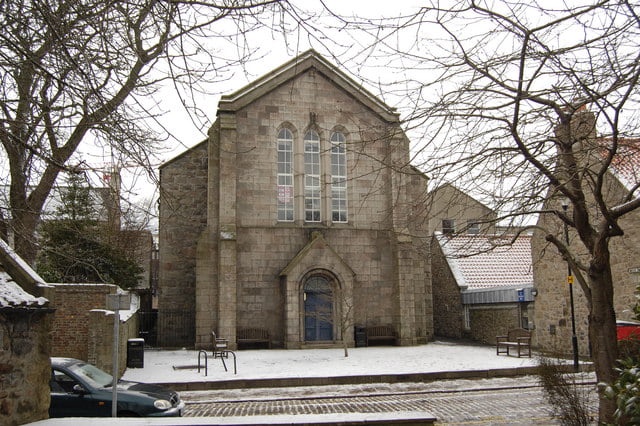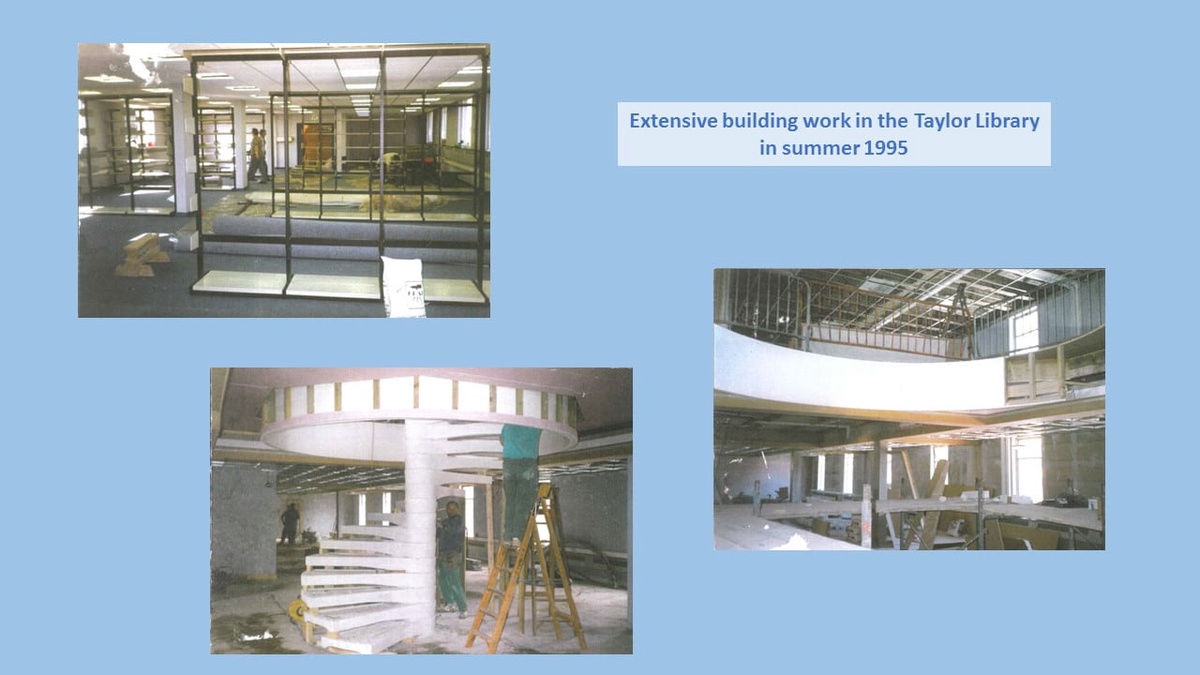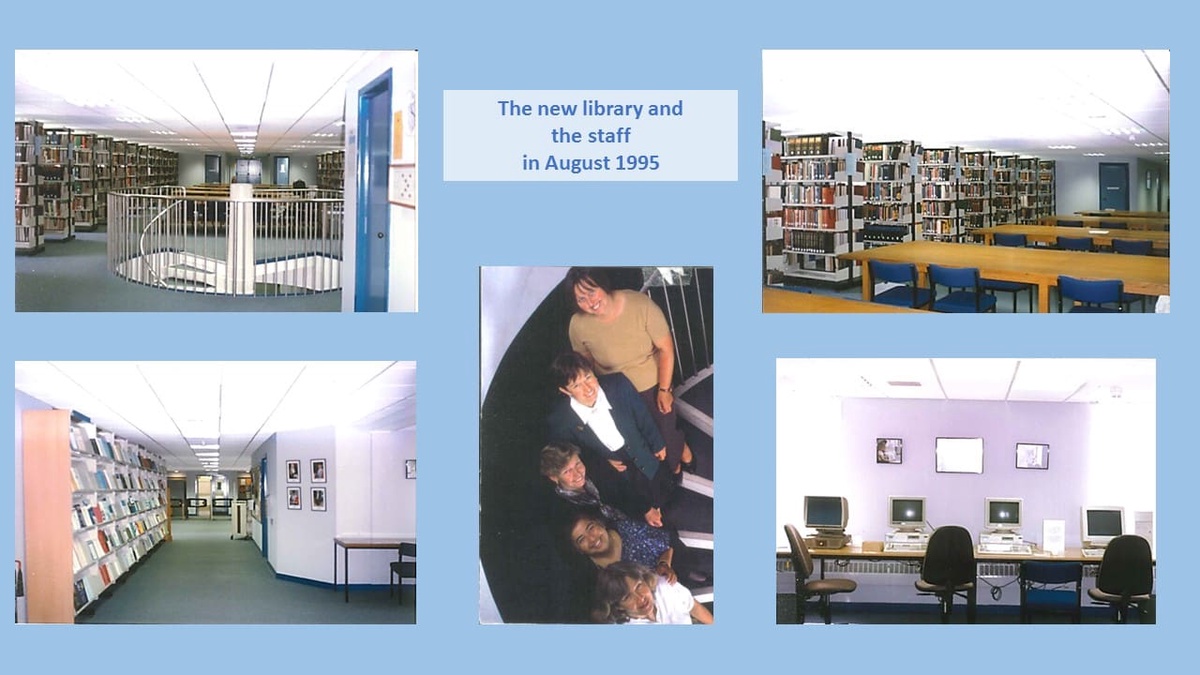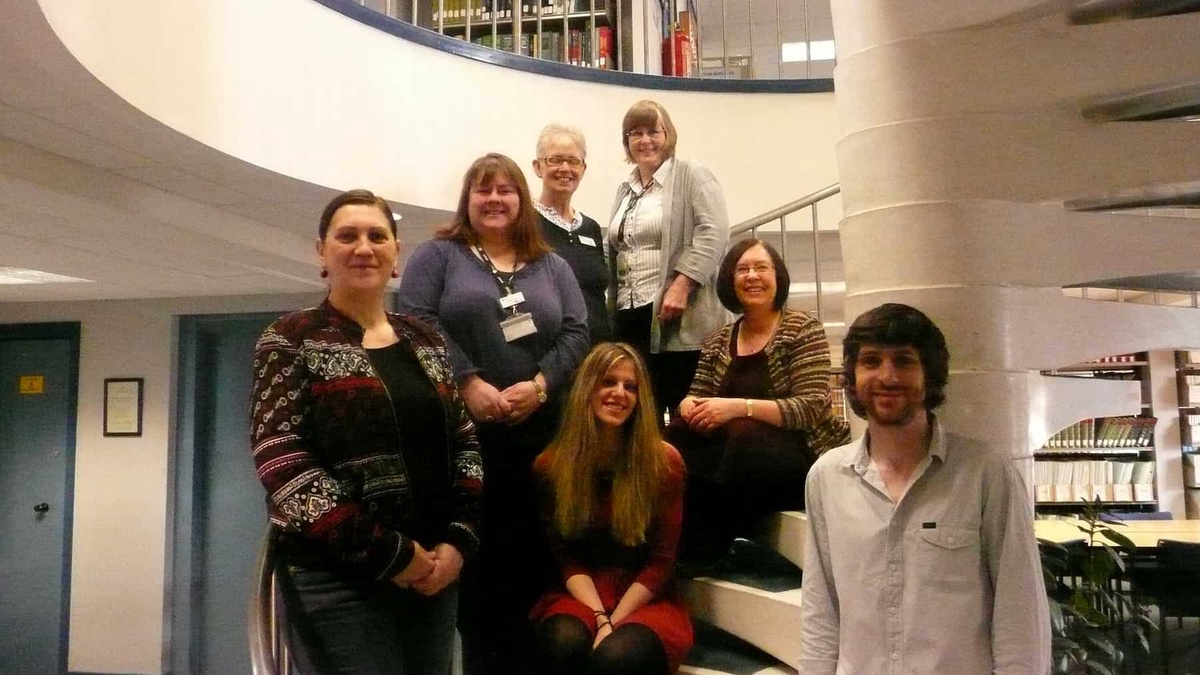In the summer 2015, we commemorate the 20th anniversary of the last and most extensive refurbishment of the Taylor Library. At this time in 1995, everyone was preparing for the huge project which had the library closed over the summer to allow the building work to be completed. Excitement filled the air as librarians were busy measuring the stock, organising the removal, negotiating with builders and liaising with academic staff and students.
There may only be a few people who remember those days. We, the majority, have never seen the old building, or known anything about the past of this library site. There may be even fewer people who remember the time before the Taylor Building existed when the library was not here at all. Notable anniversaries give us an excellent opportunity to stop for a moment and remember. This article aims to provide a short summary of the main events in Taylor's history.
Before the completion of Taylor Building, the entire Law Faculty occupied the top floor of St Mary's. The Law Library was in Room D serving the needs of both staff and students. Although the number of readers was much lower than today, it goes without saying that providing quality service was very difficult in those days.

The present library opened its doors in 1964, occupying the first and second floor of Taylor Building Block C and a few offices in Taylor Block D. It was modern and elegant, furbished with beautiful new furniture. Originally, the library was built with 42 seats and designed for a total of 80 law students and the academic staff. Although the number of the users was continuously rising, there were still no more than 3 Senior Honours students at the Law Faculty by the end of the decade. They had the honour of acquiring their own desks reserved by name in the library.
Despite the move to a new building and the progress towards a more sophisticated service, the library faced further challenges by the end of the 1970s. Statistical data and official reports show that it was short on seating, shelving and space. Although the number of seats was almost doubled (from 42 to 72), the number of the users tripled. Besides, all the shelves were woefully overcrowded as the average book acquisition increased by 5% every year. As a result of this dynamic growth, the library holdings were over 24,000 volumes in the late 70s. Yet, further acquisitions were urgently needed to address deficiencies, notably in English law, constitutional law, international law and foreign legal systems.
The lack of space was exacerbated by the fact that the second floor of Taylor Block C served only as a Gallery. It looked elegant but it led to very impractical space management.

The 1980s found the Taylor Library in very much the same position: struggling with the shortage of seats and space, and fighting for further expansion.
By the early 90s, the problems reached a critical point. There were 86 Senior Honours students (remember, the number was only 3 in 1970), 142 Junior Honours students, a great number of first and second year students, as well as the academic and support staff of the Law School who required library services. The winter edition of the Aberdeen University Faculty of Law Newsletter (1992) described the situation in the following words:
“…The search for seats last year particularly was turning into a never ending quest (unless you were there first thing in the morning or last thing at night!).
A frequent sight was a frustrated law student, armed with files, bags, newspapers, sports kit, bicycle helmet et al parading up and down the library trying to find an elusive seat!”
In 1992, there came a quick and spectacular solution in the form of flooring over the upper level of Taylor C, even though it meant the disappearance of our impressive Gallery. The new floor provided extra space for more shelves and 90 additional seats. Also, the atmosphere of the site was much improved when the famous 'Mouseman` furniture was moved from King's College Library and Old Senate Room.
But this was not the only change in 1992. New computers arrived (an Apple Mac, BULL PC and a CD-Rom reader) occupying the space near the reference section. The Current Periodicals section was displayed on a brand new free-standing shelf unit. The Lexis room was moved from upstairs to downstairs (to the old office) leaving the vacated room for use by our students as a computer room. The European Law collection was moved into its new home in Taylor Block D releasing space for the Foreign Law collection in Block C. Finally, the most important service improvement of the year may well have been that the library introduced a new, online catalogue system.
Although the Gallery was filled in to resolve the problems with space and shelving, it seemed to be only a temporary solution. The expanding law collections and the ever increasing user numbers forced this site library to undergo a more drastic expansion. In Taylor Block D - which was still mainly used by other departments of the university, the library had only a few rooms. To double its size and to solve the recurring issues with space and seating - if not for ever but for a longer period of time, the library needed to acquire the ground and the first floor of Block D in Taylor Building.
By the beginning of 1995, the library had had all the necessary permits for the extension and the building work. In order to carry out the project, the site had to be closed for the whole summer and to decant its entire content. To satisfy the needs and the repeated requests of the members of the Law Faculty, the librarians started to rearrange the periodicals and reclassify the general book collection.

The entire content of the library was removed from the building. Space in the Queen Mother Library (the former university library) had been granted for the Heavy Demand collection, the Scots Law Times, Scottish Current Law States, Citators, Yearbooks, Weekly Law Reports, Law reports, All England Law Reports, Scottish Criminal Law Reports and Scottish Civil Law Reports collections. The remaining books had to be boxed and stored in a lab in Marischal College, but the library staff provided a 24 hour retrieval service for the users and extended borrowing entitlement (up to 50 books) for research students.
On Monday 29 May 1995, the library closed for the building work.

It was absolutely critical that the library found a viable service solution because not everyone was happy with the long closure.
As the complaint letters prove, some of the academic staff felt they were forced to stop their research for the summer because of the unavailability of resources. The Law Faculty itself faced problems, too. In 1995 a large group of American students arrived at the beginning of the summer for the Baltimore/Maryland Summer School. To minimise the disruption, library staff had to regularly liaise with the Law Faculty.
After three months of building work, on Monday 28 August, the library finally reopened.

With the extension, the library doubled in size, taking the ground and the first floor of Block D. New shelving space and extra 196 study places were created. Two new Project Rooms, an extra room for information skills teaching and two banks of computers were added to enhance the quality of the service. The Heavy Demand collection was relocated, and the Heavy Demand Room was improved with a new set of shelves. The Photocopy area was extended, and the library became accessible for disabled users.
Right after the extension work, the most distinctive service change was that the entire Official Publication and European Documentation Centre collections were transferred from the Queen Mother Library to Taylor Library at the beginning of 1996. The last 20 years brought further alterations and improvements in the service. With the age of the internet, there was a huge shift from paper format to electronic resources. There are more and more books and periodicals available online. Legal, official and academic databases now satisfy a large proportion of the users' information needs. We have new, advanced technologies, e.g. superfast broadband, WIFI, Self Service Machines, MFDs (for scanning, photocopying and printing) to make the library experience more convenient. Social media (Twitter, library blogs, Facebook) helps us to communicate easily, quickly and more effectively with our readers.
Just like in the life of a human being, there are different stages in the life of an academic library, too. We started our journey in the 1950s when the library was only a room in St Mary's. Then, through the decades, it moved to its current location, it has developed, grown and improved to meet the demands of the 21st century.

Taylor Library Staff, March 2015
----
by Zita Szabo with recollections from the Taylor Library & EDC Team
